I currently have two different tables:
The first table is something like this:
| ID | Name | Course name | Course date |
|---|---|---|---|
| 2213 | Bruno | CourseA | 07/05/2021 |
| 2215 | John | CourseB | 04/05/2021 |
| 2216 | Carlos | CourseB | 04/05/2021 |
| 2215 | John | CourseA | 08/05/2021 |
The second table looks like this:
| ID | Name | CourseA | CourseB |
|---|---|---|---|
| 2213 | Bruno | ||
| 2215 | John | ||
| 2215 | Carlos |
My desired output is going to be like this (which is basically the second table mentioned above but now with the dates):
| ID | Name | CourseA | CourseB |
|---|---|---|---|
| 2213 | Bruno | 07/05/2021 | |
| 2215 | John | 08/05/2021 | 04/05/2021 |
| 2216 | Carlos | 04/05/2021 |
What is the easiest way I can do something like this? Thanks a lot!!!
